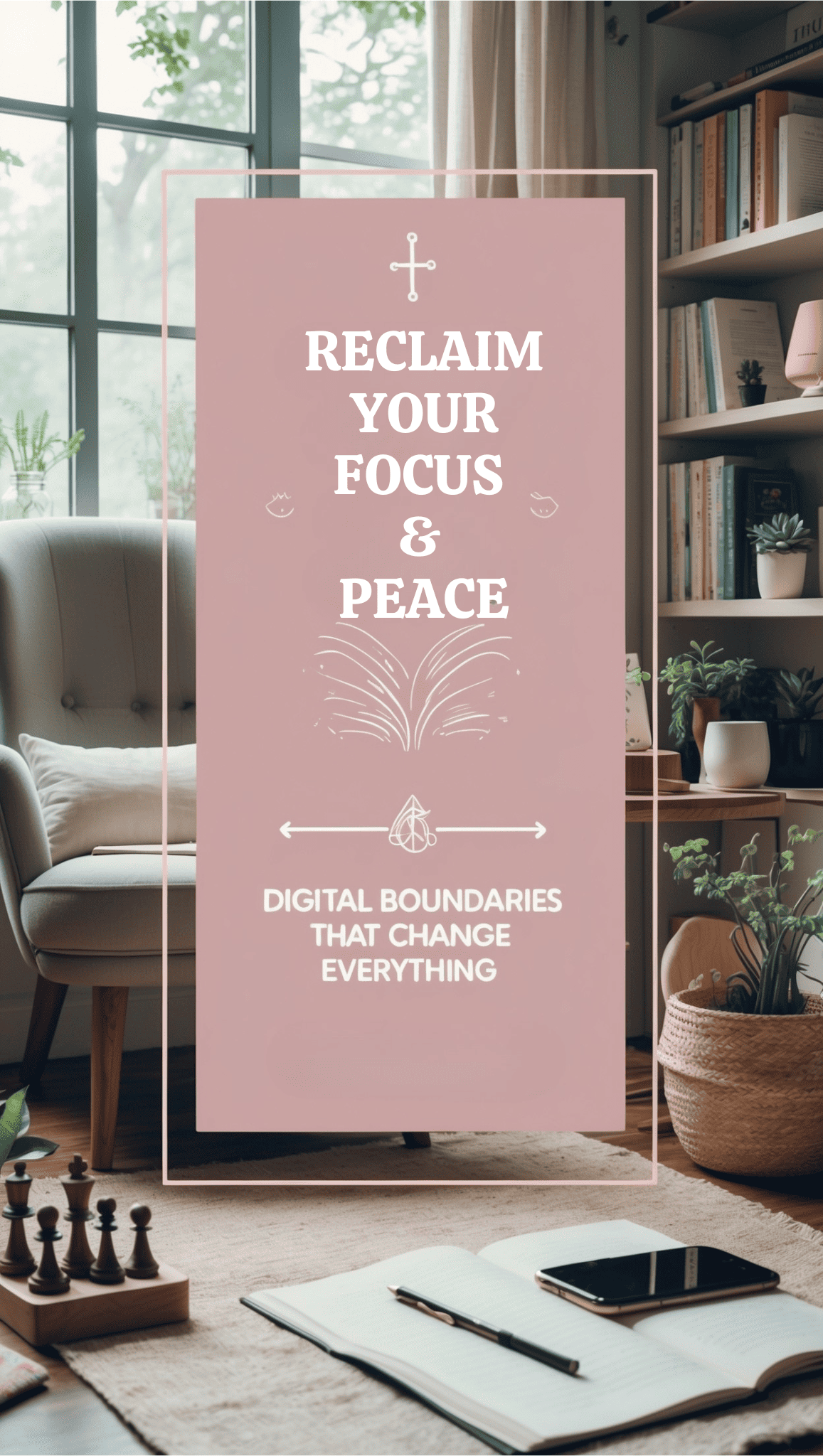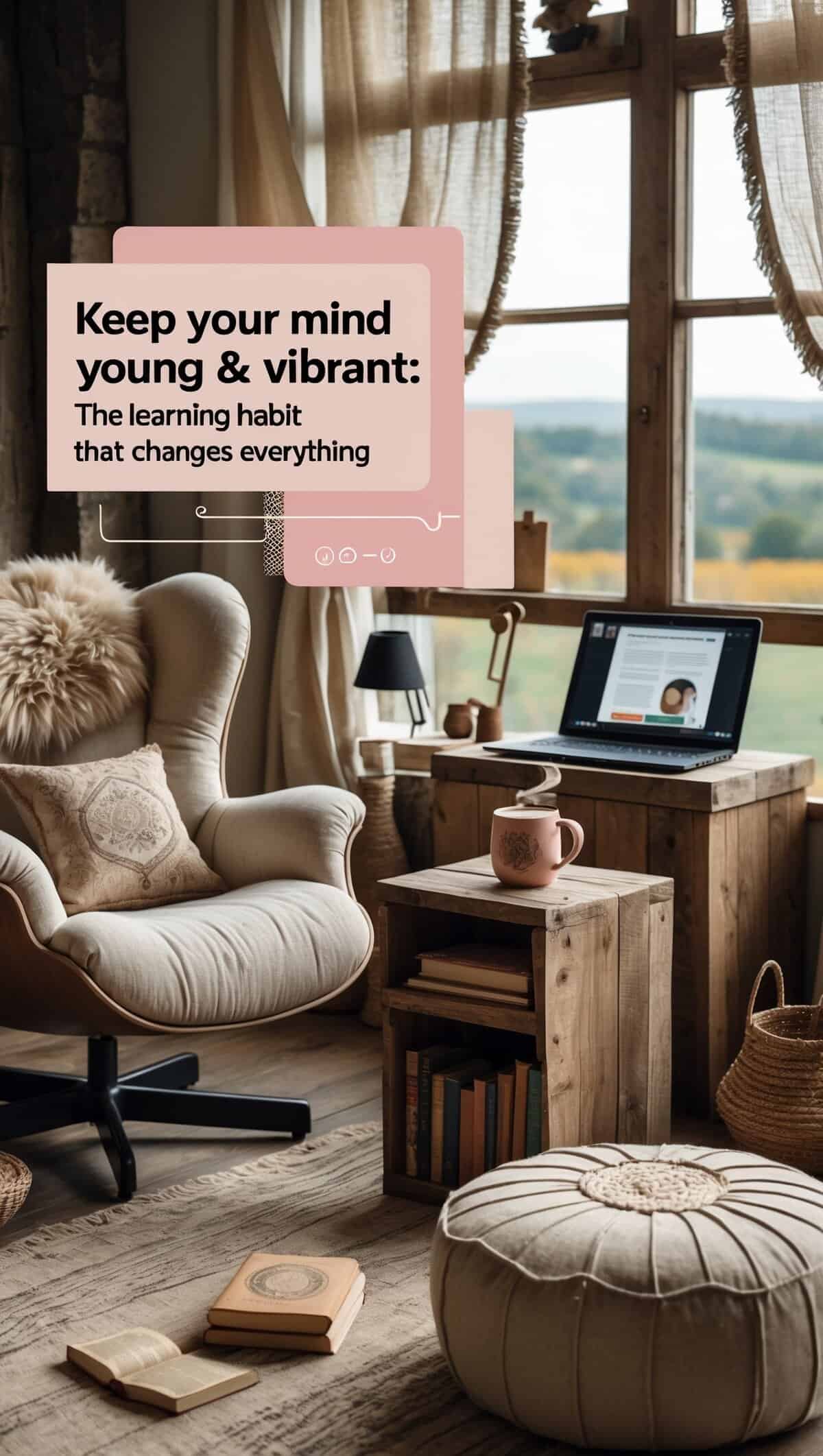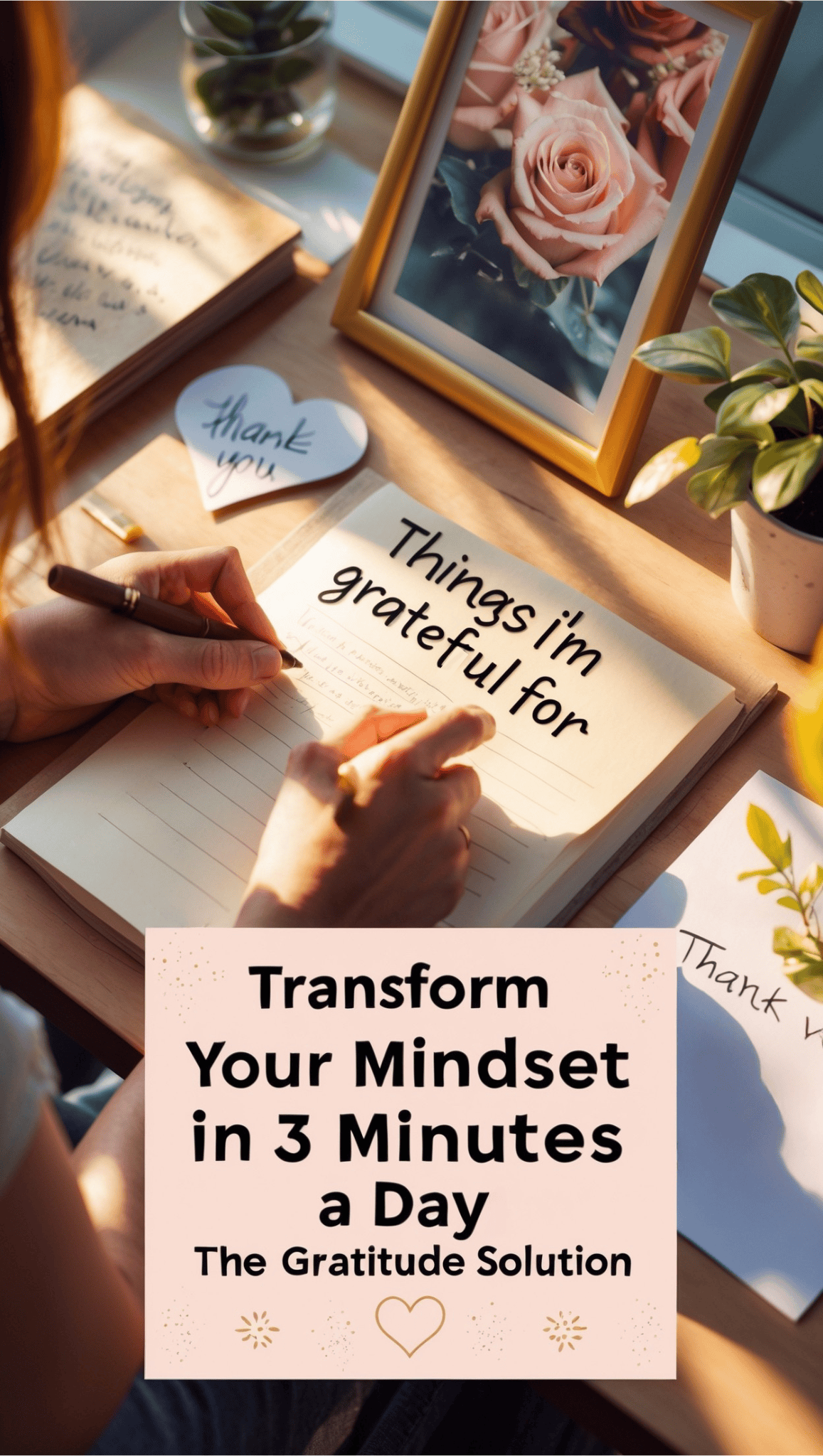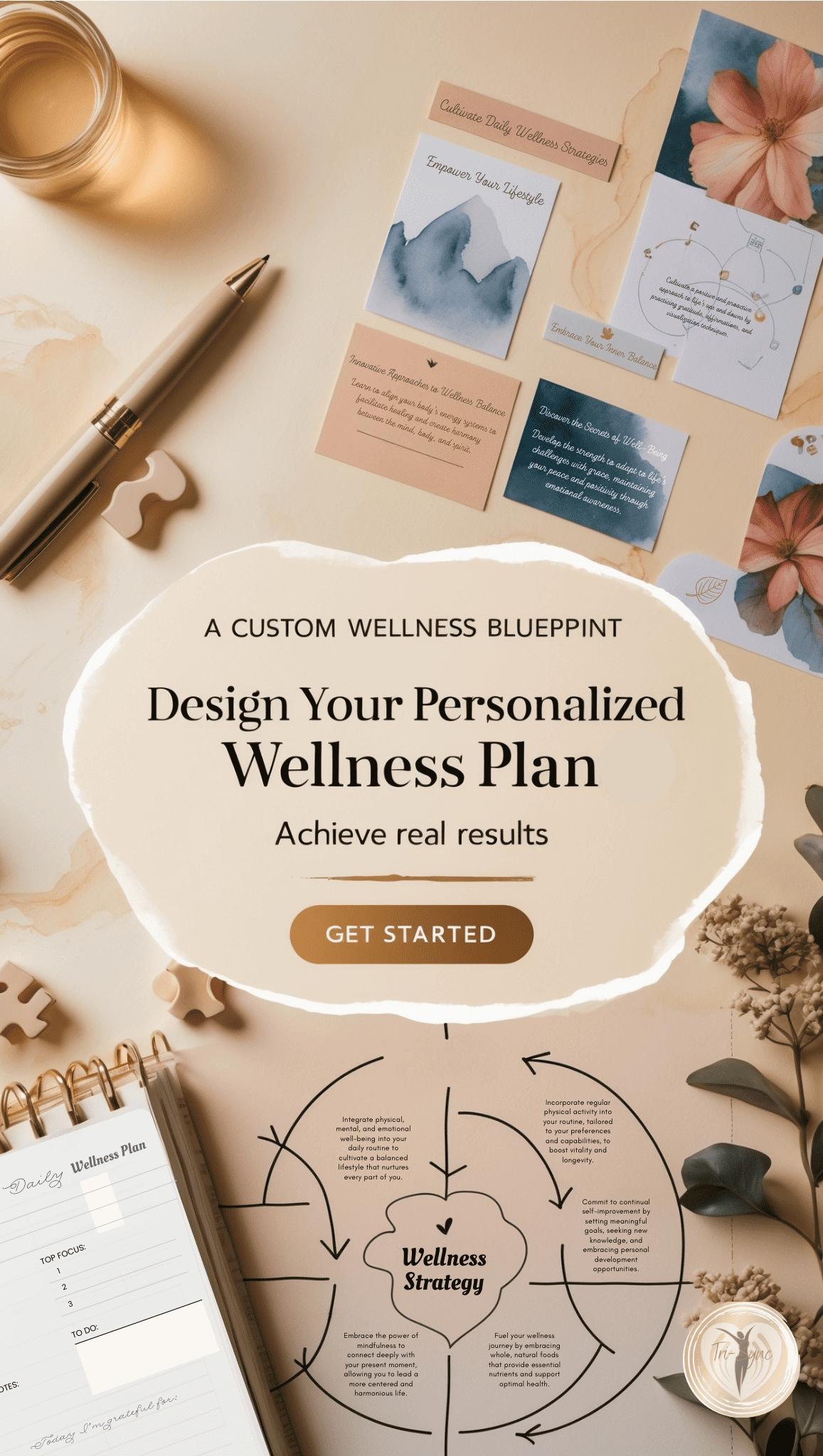
Have you ever felt like your life is a constant tug-of-war between work, relationships, health, and personal growth? You’re definitely not alone! In today’s fast-paced world, finding balance seems like chasing a mirage – always visible but somehow just out of reach. The good news is that creating a life of holistic wellness doesn’t require dramatic lifestyle overhauls or complicated routines. Instead, it’s the small, consistent daily habits that truly transform how we feel, function, and flourish.
I’ve spent years experimenting with different wellness approaches, and I’ve discovered that the most sustainable path to balance comes through intentional daily practices. These aren’t just random activities but carefully selected habits that nourish every dimension of wellbeing – physical, mental, emotional, and spiritual. What makes these practices so powerful is their simplicity and how they compound over time, creating profound shifts in energy, clarity, and overall satisfaction. Ready to discover the daily habits that could revolutionize your approach to holistic wellness?
This post may contain affiliate links. I only recommend products and services I genuinely believe in. Additionally, some images on this website may have been created with the help of AI to convey the feeling I wish to share with the reader.
What You Might Need
- A journal or note-taking app for tracking habits and reflecting on progress
- Comfortable clothing for movement practices
- A reusable water bottle to keep hydration accessible
- A dedicated meditation space or quiet corner in your home
- Timer or app for managing digital boundaries
- Simple healthy ingredients for nutritious meals
- Comfortable sleep environment (quality pillows, light-blocking curtains)
- Nature access (even a small park or indoor plants count!)
- Social connection opportunities (in-person or virtual)
- Learning resources (books, podcasts, online courses)
1. Morning Mindfulness: Start Your Day with Intention

The moment you open your eyes sets the tone for everything that follows. I used to dive straight into email and social media, which left me feeling scattered and reactive all day long. Once I started dedicating just 10 minutes to morning mindfulness, I noticed an immediate difference in my focus, mood, and ability to handle whatever challenges came my way. This simple practice of presence creates a foundation of calm that ripples through your entire day.
Morning mindfulness isn’t about perfection or complicated meditation techniques. It’s about creating a pocket of stillness before the day’s demands begin their parade. When I first started, I couldn’t quiet my mind for more than 30 seconds, but with gentle persistence, this practice has become my non-negotiable anchor. The beauty of mindfulness is that it’s completely personalized – whether you prefer guided meditation, mindful breathing, or simply sitting with your morning tea in complete presence.
The Mental Clarity Benefit
Morning mindfulness practice significantly reduces stress hormones and activates the parasympathetic nervous system, promoting a state of calm alertness that improves decision-making and emotional regulation throughout the day.
Boosting Productivity Through Presence
Starting your day mindfully creates mental space that enhances focus and reduces the tendency to multitask, leading to more effective engagement with important tasks and less time wasted on distractions.
Combining Mindfulness with Intention Setting
When paired with conscious intention-setting for the day ahead, morning mindfulness becomes even more powerful, helping align your actions with your deeper values and priorities.
How to Create a Morning Mindfulness Routine
- Find a quiet space where you won’t be disturbed for 10-15 minutes
- Choose a comfortable seated position (no need for fancy yoga poses!)
- Set a gentle timer so you can fully relax without watching the clock
- Begin with three deep breaths to signal to your body it’s time to settle
- Focus on physical sensations, breath patterns, or use a guided meditation
- When your mind wanders (it will!), gently redirect your attention without judgment
- End by setting one clear intention for your day
Picture This
You wake naturally with the soft morning light filtering through your curtains. Instead of reaching for your phone, you take a moment to stretch and smile. Sitting comfortably in your favorite corner, you close your eyes and take three deep breaths, feeling your shoulders relax. For ten minutes, you simply observe your thoughts without getting caught in their current, returning to the sensation of your breath whenever you drift. As you open your eyes, you feel centered, peaceful, and ready to meet the day with mindful awareness rather than reactive autopilot.
2. Nourish Your Body: Balanced Nutrition for Sustained Energy

Food is so much more than calories – it’s information for our cells and the foundation of how we feel each day. I spent years cycling through restrictive diets that left me tired, cranky, and constantly thinking about what I couldn’t eat. The game-changer was shifting to a nourishment mindset focused on adding nutrient-dense foods rather than eliminating “bad” ones. This approach transformed not just my physical energy but my entire relationship with food and my body.
Balanced nutrition doesn’t require complicated meal plans or expensive superfoods. At its heart, it’s about listening to your body’s hunger cues and providing it with a variety of whole foods that supply steady energy. I’ve found that preparing simple meals with quality ingredients and eating them mindfully creates a natural harmony that fad diets never delivered. When we view food as a source of nourishment rather than a battle of willpower, everything changes – including our energy levels, mood stability, and even how we show up in our relationships.
Nutrition for Mental Wellbeing
Research increasingly shows that gut health is directly connected to brain function, with nutrient-dense foods supporting neurotransmitter production that influences mood, focus, and cognitive performance.
Eating for Sustainable Energy
Complex carbohydrates paired with healthy proteins and fats create steady blood sugar levels that prevent the energy crashes and mood swings associated with highly processed foods and sugar.
The Power of Mindful Eating
Slowing down and eating with awareness improves digestion, enhances satisfaction, and naturally guides you toward foods that genuinely nourish your unique body.
Steps to Create Balanced Nutrition Habits
- Focus on adding rather than restricting – aim for more vegetables, fruits, and whole foods
- Build meals with a foundation of protein, healthy fats, complex carbs, and plenty of colorful vegetables
- Prepare simple batch-cooked items on weekends (roasted vegetables, cooked grains, marinated proteins)
- Keep healthy snacks visible and accessible for busy days
- Practice eating without distractions at least once daily to reconnect with genuine hunger and fullness cues
- Drink water throughout the day, especially before meals
- Notice how different foods affect your energy, mood, and digestion
Picture This
You open your fridge to find colorful vegetables, prepared proteins, and simple homemade dressings ready for quick assembly. Creating your lunch takes just minutes as you combine these nourishing elements into a satisfying meal. As you eat without scrolling or rushing, you notice the flavors, textures, and how your body begins to feel energized rather than sluggish. Your afternoon unfolds with steady focus instead of cravings or the typical 3 pm energy crash. This balanced approach to nutrition supports your daily habits for holistic wellness, providing the sustained fuel your body needs to thrive through all of life’s demands.
3. Movement as Medicine: Finding Joy in Physical Activity

Exercise transformed for me when I stopped seeing it as punishment and started approaching it as a celebration of what my body can do. For years, I forced myself through workouts I dreaded, constantly counting down the minutes until they were over. The breakthrough came when I discovered movement forms that actually brought me joy – strength training, hiking with friends, or flowing through yoga poses that made me feel strong and peaceful simultaneously. Physical activity became something I looked forward to rather than an obligation to check off my list.
The truth about sustainable movement is that consistency trumps intensity every time. I’ve learned that a gentle daily walk does more for my wellbeing than an occasional brutal gym session that leaves me sore for days. Our bodies are designed to move regularly throughout the day, not to sit for hours and then compensate with extreme exercise. When we approach movement as a natural, pleasurable part of daily life, we tap into benefits that go far beyond physical fitness – enhanced creativity, improved mood, better sleep, and a deeper connection to our bodies’ wisdom.
Movement for Mental Health
Regular physical activity releases endorphins and other beneficial neurochemicals that significantly reduce anxiety and depression while improving overall mood and emotional resilience.
Building Strength and Mobility
Functional movement practices enhance your body’s ability to perform daily activities with ease, preventing injuries and maintaining independence throughout life.
Combining Movement with Nature
Taking your physical activity outdoors multiplies the benefits, combining the stress-reducing effects of natural environments with the physical advantages of movement.
How to Create a Sustainable Movement Practice
- Experiment with different activities until you find forms of movement that genuinely bring you joy
- Start with just 5-10 minutes daily to establish consistency before increasing duration
- Look for natural opportunities to move throughout your day (taking stairs, walking meetings, dance breaks)
- Find an accountability partner or community that makes movement more enjoyable
- Schedule movement sessions in your calendar like important appointments
- Focus on how movement makes you feel rather than how you look
- Mix up intensity levels – combine gentle activities like walking with more challenging sessions
Picture This
The sun warms your face as you move your body along a tree-lined path, your muscles engaging with each step. There’s no struggle or internal negotiation – just the natural pleasure of a body in motion. You notice birds calling, the rhythm of your breathing, and how your mind has shifted from its earlier worries to a state of present-moment awareness. This isn’t exercise as punishment; it’s movement as medicine, a daily habit for holistic wellness that reconnects you with your physical vitality. Later, you’ll notice how this simple practice has lifted your mood, cleared your thinking, and prepared your body for restful sleep – benefits that far transcend any physical changes.
4. Quality Sleep: Design Your Perfect Bedtime Routine

Sleep is my non-negotiable foundation for wellbeing, though it wasn’t always this way. I used to wear sleep deprivation like a badge of honor, believing I could power through with enough caffeine and willpower. That approach eventually caught up with me in the form of brain fog, mood swings, and diminished immune function. Once I committed to prioritizing sleep quality, every aspect of my life improved – from work performance to emotional resilience to my ability to make healthy choices throughout the day.
Creating the conditions for restorative sleep starts long before your head hits the pillow. I’ve discovered that a consistent wind-down routine signals to my body that it’s time to transition from doing mode to being mode. This predictable sequence helps regulate circadian rhythms and prepares both body and mind for deep rest. While the perfect amount of sleep varies between individuals, the quality of that sleep makes all the difference in how we experience our waking hours. By treating sleep as sacred rather than optional, we give ourselves the gift of showing up as our best, most energized selves each day.
Sleep’s Impact on Cognitive Function
Quality sleep optimizes brain processes including memory consolidation, creative problem-solving, and learning retention, making it essential for intellectual performance.
The Emotional Regulation Connection
Sufficient deep sleep helps regulate emotional responses by allowing the amygdala and prefrontal cortex to reset, leading to greater resilience when facing daily stressors.
Sleep as Metabolic Support
During quality sleep, your body performs critical hormonal balancing that regulates appetite, supports healthy metabolism, and contributes to long-term weight management.
Steps to Create Your Ideal Sleep Sanctuary
- Establish a consistent sleep-wake schedule, even on weekends
- Create a bedroom environment that supports rest: cool, dark, quiet, and clutter-free
- Implement a digital sunset 60-90 minutes before bedtime (no screens or switch to night mode)
- Develop a calming bedtime ritual (gentle stretching, reading, meditation, or bath)
- Limit caffeine after noon and alcohol within 3 hours of bedtime
- Try relaxation techniques like 4-7-8 breathing or progressive muscle relaxation
- Use journaling to “download” lingering thoughts or worries before sleep
Picture This
The soft glow of amber light fills your bedroom as you move through your evening ritual. Your phone is charging in another room, its notifications silenced. After a warm shower and gentle stretching, you slide between clean sheets with a book rather than a screen. Your breathing naturally slows as your body recognizes these familiar cues for rest. Within minutes of turning out the light, you drift into deep, uninterrupted sleep that will repair your cells, consolidate your memories, and prepare you for another day of holistic wellness practices. When morning comes, you’ll wake naturally, refreshed and ready rather than groggy and resistant – the natural result of honoring your body’s need for quality rest.
5. Digital Boundaries: Managing Screen Time for Mental Clarity

My relationship with technology has evolved dramatically over the years – from constant connectivity that left me perpetually distracted to intentional boundaries that protect my mental space. The turning point came when I realized how fragmented my attention had become and how that fragmentation was affecting my creativity, relationships, and overall sense of presence. Setting digital boundaries wasn’t easy at first, but the mental clarity I’ve gained has been worth every moment of FOMO and withdrawal.
Digital boundaries aren’t about rejecting technology but rather putting it in its proper place as a tool rather than a master. I’ve found that creating tech-free zones (like my bedroom) and tech-free times (first hour after waking, mealtimes, and an hour before bed) allows me to enjoy technology’s benefits without sacrificing my mental wellbeing. Our brains simply aren’t designed for constant stimulation and interruption, and when we honor that biological reality, we reclaim our attention – our most precious resource in an increasingly distracted world.
Attention Restoration Benefits
Regular breaks from digital stimulation allow your brain’s attention systems to recover from the constant partial attention that characterizes most screen use, leading to improved focus and cognitive performance.
Enhanced Real-World Connection
Setting digital boundaries creates space for deeper face-to-face interactions, strengthening relationships and providing the authentic social connection essential for emotional wellbeing.
Improved Sleep Architecture
Reducing evening screen exposure limits blue light disruption of melatonin production, helping regulate your circadian rhythm for more restorative sleep patterns.
How to Implement Healthy Digital Boundaries
- Designate completely tech-free zones in your home (especially the bedroom)
- Create tech-free time blocks throughout your day (mornings, mealtimes, before bed)
- Use app limits or screen time tracking to become aware of your digital consumption
- Turn off non-essential notifications to reduce the constant pull for attention
- Try a “digital sabbath” – one day per week with minimal technology use
- Keep devices out of sight when not in use (the mere presence of a phone reduces cognitive capacity)
- Practice mindful technology use – ask “why am I reaching for my device right now?”
Picture This
The afternoon sun streams through your window as you engage deeply in a creative project, your phone tucked away in another room. Without the constant ping of notifications, your thoughts flow uninterrupted, allowing connections and ideas that scattered attention would never permit. When you do check your messages later, you do so intentionally, giving them your full focus rather than dividing your attention. As evening approaches, screens are powered down in favor of conversation, reading, or simply being present with your thoughts. This deliberate approach to technology creates space for the reflective thinking essential to holistic wellness, allowing your mind the quiet it needs to process, integrate, and restore.
6. Hydration Habits: The Foundation of Physical Wellness

Water is quite literally the essence of life, yet proper hydration remained one of my most overlooked wellness practices for years. I’d go hours engrossed in work without a single sip, then wonder why I felt fatigued, unfocused, and irritable by afternoon. The simple act of prioritizing regular hydration has created ripple effects through every aspect of my physical wellbeing – from clearer skin and better digestion to reduced headaches and improved energy levels throughout the day.
Creating consistent hydration habits isn’t just about drinking when you’re thirsty (which is actually a sign you’re already dehydrated). I’ve found success by making water easily accessible and creating triggers that remind me to drink regularly. Starting my day with a full glass of water before anything else and keeping a beautiful bottle within sight has transformed hydration from an afterthought to a cornerstone habit. Our bodies are roughly 60% water, with every cell, tissue, and organ requiring proper hydration to function optimally – making this perhaps the simplest yet most impactful daily habit for holistic wellness.
Cognitive Performance Enhancement
Even mild dehydration of 1-2% can impair cognitive functions including concentration, alertness, and short-term memory, making consistent hydration essential for mental performance.
Digestive System Support
Proper hydration ensures efficient nutrient absorption and waste elimination, preventing common issues like constipation and supporting your body’s natural detoxification processes.
Energy Regulation Through Hydration
Water plays a critical role in cellular energy production, with adequate hydration helping maintain stable energy levels and reducing the fatigue often mistaken for hunger or sleep deprivation.
Steps to Establish Consistent Hydration Habits
- Start your day with 16oz of water before consuming anything else
- Use a marked water bottle to track your intake throughout the day
- Set hydration alarms or link drinking water to existing habits (before meals, after bathroom breaks)
- Infuse water with fruits, herbs, or cucumber to enhance flavor without adding sugar
- Eat water-rich foods like cucumber, watermelon, oranges, and leafy greens
- Reduce dehydrating beverages like alcohol and excessive caffeine
- Adjust your intake based on activity level, climate, and individual needs
Picture This
Morning light filters through your kitchen window as you fill your favorite glass bottle with fresh, filtered water. The first cool sips awaken your system, initiating a gentle internal cleansing that will continue throughout the day. Your hydration bottle becomes a constant companion – during work, errands, and exercise – its presence a visual reminder of this fundamental self-care practice. With each sip, you’re supporting the countless invisible processes happening within your body: nutrients flowing to cells, toxins being flushed away, joints moving smoothly, and brain function remaining sharp. This simple daily habit for holistic wellness – consistent hydration – creates the foundation upon which all other aspects of physical wellbeing can flourish.
7. Meaningful Connections: Nurturing Your Social Wellness

The depth of our connections with others may be the single greatest predictor of our happiness and longevity, yet meaningful relationship-building often gets sacrificed in our busy lives. I’ve experienced periods of isolation where professional achievements felt hollow without people to share them with, and times of rich community that carried me through challenges no amount of individual resilience could overcome. Building intentional time for connection has become a non-negotiable part of my wellness routine – as essential as exercise or nutrition.
Quality truly matters more than quantity when it comes to social wellness. I’ve found that a small circle of authentic relationships provides more nourishment than a large network of surface connections. The digital age has made it easier than ever to stay in constant contact, yet paradoxically harder to create the undistracted presence that meaningful connection requires. By prioritizing face-to-face interactions (or video calls when distance separates us) and creating space for conversations that go beyond small talk, we feed our intrinsic need for belonging and understanding – a hunger just as real as our physical needs.
The Longevity Connection
Research consistently shows that strong social connections can increase longevity by up to 50%, making meaningful relationships as important as diet, exercise, and not smoking for physical health.
Emotional Resilience Building
Regular positive social interactions stimulate the release of oxytocin and other neurochemicals that buffer against stress and provide emotional regulation during challenging times.
Identity and Purpose Enhancement
Healthy relationships provide mirrors that reflect our authentic selves and contribute to our sense of meaning and purpose in the larger community.
How to Cultivate Meaningful Connections
- Schedule regular check-ins with important people in your life, treating these as non-negotiable appointments
- Practice active listening by putting away devices and focusing fully on the person speaking
- Ask questions that invite deeper sharing beyond surface-level conversation
- Share your own authentic experiences and vulnerabilities when appropriate
- Create rituals of connection (weekly dinners, monthly hikes, annual gatherings)
- Join communities aligned with your values and interests
- Be intentional about disconnecting from draining relationships while nurturing supportive ones
Picture This
Laughter echoes around the table as you share a homemade meal with a small group of friends, phones stacked and forgotten in another room. The conversation flows effortlessly from lighthearted stories to meaningful reflections on life’s challenges and joys. You notice how your nervous system relaxes in this atmosphere of genuine connection, how problems that seemed overwhelming earlier now feel manageable with the perspective these trusted companions provide. This is social wellness in action – not endless networking or maintaining hundreds of digital connections, but creating space for the kind of authentic human interaction that has supported holistic wellness throughout human history. In these moments of true connection, you’re not just living longer but living better.
8. Continuous Learning: Feeding Your Intellectual Curiosity

The moment we stop learning is the moment we begin to stagnate, regardless of our age or education level. I’ve discovered that maintaining an active curiosity about the world creates a sense of freshness and possibility that combats the ruts we often fall into with routine. Whether it’s exploring a new subject through books, taking an online course, or simply having conversations with people whose perspectives differ from mine, continuous learning keeps my mind flexible and engaged with life’s endless possibilities.
Intellectual wellness isn’t about academic achievement but rather about maintaining an open, growing relationship with knowledge and ideas. I find that balancing information consumption with reflection and application prevents the overwhelm that can come from our information-saturated world. The beauty of making learning a daily habit is that it compounds over time – each new concept connects with existing knowledge to create insights that wouldn’t be possible otherwise. Our brains crave novelty and challenge at every age, and when we feed that hunger intentionally, we protect our cognitive health while enriching our experience of the world.
Cognitive Reserve Building
Regular intellectual stimulation builds neural pathways that create cognitive reserve, potentially delaying age-related mental decline and supporting brain health throughout life.
Perspective Expansion Through Learning
Exploring diverse subjects and viewpoints increases mental flexibility, empathy, and creativity by challenging existing thought patterns and introducing new frameworks.
Self-Efficacy Enhancement
The process of mastering new skills or knowledge builds confidence that transfers to other life areas, fostering a growth mindset and resilience when facing challenges.
Steps to Cultivate a Learning Lifestyle
- Dedicate 15-30 minutes daily to learning something new through reading, podcasts, or online courses
- Keep a curiosity list of topics, questions, or skills you’d like to explore
- Join book clubs, discussion groups, or online communities centered around learning
- Practice explaining concepts to others (even if just in your journal) to deepen understanding
- Apply new knowledge practically whenever possible rather than just consuming information
- Seek diverse perspectives that challenge your existing viewpoints
- Balance consumption with reflection time to integrate new information
Picture This
The soft glow of a reading lamp illuminates your comfortable corner as you lose yourself in exploring a subject that’s captured your curiosity. Notes fill the margins of your book, or perhaps you pause a podcast to reflect on a particularly insightful point. This isn’t learning for a grade or career advancement – it’s learning for the pure joy of understanding something new about the world. Later, in conversation with a friend or while solving a problem at work, connections form between this new knowledge and your existing understanding, creating insights that wouldn’t have been possible otherwise. This daily habit for holistic wellness – feeding your intellectual curiosity – keeps your mind as vibrant and growing as your body, creating the mental flexibility that allows you to adapt and thrive through life’s constant changes.
9. Nature Connection: The Healing Power of the Outdoors

My relationship with nature transformed when I began to see it not as a luxury but as a necessity for my well-being. During a particularly stressful period in my life, I noticed how even brief moments outside – feeling sunlight on my skin or watching birds at my feeder – would immediately shift my mental state. The research supporting nature’s healing effects is overwhelming, yet many of us spend over 90% of our lives indoors, disconnected from the natural environments our bodies and minds evolved to inhabit.
Nature connection doesn’t require grand wilderness adventures or living in rural settings. I’ve found that simple daily practices like watching a sunrise, tending houseplants, or eating lunch in a nearby park create a rhythm of reconnection that grounds me in something larger than human concerns. There’s a particular quality of attention that emerges in natural settings – simultaneously relaxed and alert – that allows for both mental restoration and insight. By making nature connection a daily priority rather than an occasional escape, we tap into an ancient source of balance that our technology-focused culture often overlooks.
Stress Hormone Reduction
Just 20 minutes in a natural setting significantly lowers cortisol levels and activates the parasympathetic nervous system, creating measurable physiological relaxation responses.
Attention Restoration Effect
Natural environments provide the perfect balance of stimulation without overwhelming demands, allowing directed attention to recover from the depletion caused by focused work.
Sensory Awareness Enhancement
Time in nature engages all your senses simultaneously in a balanced way, bringing you into the present moment and developing mindfulness naturally.
How to Build a Daily Nature Connection Practice
- Start your day with even 5 minutes outside, noticing the quality of light, air, and sounds
- Take work breaks outdoors when possible, or at least near a window with a natural view
- Bring nature indoors with plants, natural materials, and sounds of nature
- Practice “sensory scavenger hunts” – intentionally notice something new with each sense when outdoors
- Tend a garden space, even if just a few potted herbs on a windowsill
- Schedule regular “nature immersions” in larger natural spaces when possible
- Try “forest bathing” – moving slowly through natural settings with full sensory awareness
Picture This
Wind gently rustles leaves overhead as you follow a meandering path through dappled sunlight. Your breathing naturally deepens, synchronizing with the rhythmic sounds of the natural world around you. The constant mental chatter that accompanies most of your day has quieted, replaced by a simple awareness of your senses – the earthy scent of soil, the varied greens meeting your eyes, the texture of bark beneath your fingertips. This isn’t just a pleasant break from routine; it’s a powerful reset for your nervous system and perspective, a daily habit for holistic wellness that reconnects you with the larger living world. When you return to your human responsibilities, you bring with you the expanded sense of time and possibility that nature so effortlessly provides.
10. Gratitude Practice: Cultivating Appreciation and Contentment

Gratitude transformed from a nice-to-have addition to an essential practice when I realized its power to completely shift my perception of daily life. During a particularly challenging period, I began the simple habit of noting three specific things I appreciated each evening. What started as a mechanical exercise gradually rewired my attention – I began noticing positive aspects throughout my day that I would have previously overlooked. This wasn’t about forced positivity but rather about balancing my brain’s natural negativity bias with intentional appreciation.
The most powerful aspect of gratitude is that it works regardless of circumstances – focusing not on having everything you want, but wanting what you already have. I’ve found that gratitude doesn’t deny difficulties but rather places them in a larger context where good things can coexist with challenges. The practice creates a subtle but profound shift from scarcity thinking to abundance awareness, affecting everything from stress levels to relationship quality. By training our attention to notice what’s going well rather than just what’s lacking, we access a renewable source of contentment that’s available in any situation.
Neural Pathway Restructuring
Regular gratitude practice literally rewires your brain, strengthening neural pathways that notice positive aspects of experience and counterbalancing the negativity bias.
Emotional Resilience Building
Cultivating appreciation creates psychological resources that buffer against stress and provide perspective during difficult experiences or negative emotions.
Relationship Enhancement Through Appreciation
Expressed gratitude strengthens bonds by acknowledging others’ contributions and creating positive feedback loops of appreciation and reciprocity.
Steps to Develop a Meaningful Gratitude Practice
- Create a simple daily ritual (morning or evening) to note 3-5 specific things you appreciate
- Focus on experiences rather than possessions, and people rather than things when possible
- Practice sensory gratitude by savoring pleasant physical experiences (taste of food, warmth of sun)
- Write gratitude letters (whether sent or unsent) to people who have positively impacted your life
- Share verbal appreciation with others regularly and specifically
- Practice “pre-gratitude” by imagining future events you’re looking forward to with appreciation
- Notice the small, ordinary gifts of daily life that are easy to overlook
Picture This
As the day draws to a close, you take a few quiet moments with your journal, reflecting on the day’s experiences. Rather than focusing on your endless to-do list or tomorrow’s challenges, you direct your attention to specific moments of goodness – the colleague who offered help without being asked, the way sunlight created patterns on your kitchen wall, the reliable comfort of a warm shower. This simple practice of noticing what went right gradually transforms your perception, creating a lens of appreciation that carries into tomorrow. This daily habit for holistic wellness doesn’t change your external circumstances, but it fundamentally shifts how you experience them – from a stance of lack and longing to one of sufficiency and gratitude, even amidst life’s inevitable challenges.
Want to Simplify Your Wellness Journey?
As you’ve learned throughout this article, implementing daily habits for holistic wellness can transform your life, but knowing exactly where to start and how to integrate these practices into your unique lifestyle is often the biggest challenge. Creating lasting balance requires a personalized approach that thoughtfully combines mindfulness routines, nutritional strategies, movement practices, and sleep optimization for unique wellness journey success—all tailored to your individual needs and daily rhythms.

Ready for a Customized Approach to Your Wellness Journey?
My Holistic Wellness Foundation Audit helps you move beyond generic advice to create a comprehensive strategy that works specifically for you. During this 90-minute session, we’ll assess your current habits, identify your priority wellness areas, and develop a practical implementation plan that integrates the most impactful daily practices for your unique situation.
You’ll receive a personalized blueprint that addresses all dimensions of well-being—from morning mindfulness routines to digital boundaries that protect your mental space to sustainable nutrition approaches that fuel your body. Skip the overwhelming process of trying to change everything at once and start your journey with clarity and confidence. Book your Holistic Wellness Foundation Audit today and transform your approach to lasting balance!
Personalized Wellness Plan Development

Final Thoughts
The beauty of these ten daily habits for holistic wellness lies not in their complexity but in their simplicity and interconnectedness. Each practice supports and enhances the others, creating a foundation of wellbeing that’s greater than the sum of its parts. Mindfulness improves eating choices, quality sleep enhances exercise recovery, nature connection deepens gratitude – the positive ripple effects multiply as these habits become integrated into your daily rhythm.
Remember that holistic wellness isn’t about perfection or following someone else’s blueprint. It’s about creating personalized practices that honor your unique needs, preferences, and life circumstances. Start with just one or two habits that resonate most deeply, allowing them to take root before adding more. Small, consistent actions create more sustainable change than dramatic overhauls that quickly fade.
The path to balance isn’t a destination but a daily choice to honor all dimensions of your wellbeing – physical, mental, emotional, social, and spiritual. Some days will flow more easily than others, and that’s perfectly normal. What matters is returning to these foundational practices with self-compassion rather than judgment when you inevitably drift.
As you integrate these holistic wellness habits into your life, you’re not just improving your health metrics or productivity. You’re creating a life that feels good from the inside out – one where energy, clarity, connection, and contentment become your natural state rather than occasional visitors. That transformation happens not through grand gestures but through the small, daily choices that ultimately shape who we become. Which habit will you begin with today?

This post may contain affiliate links. I only recommend products and services I genuinely believe in. Additionally, some images on this website may have been created with the help of AI to convey the feeling I wish to share with the reader.
Frequently Asked Questions
How long does it take for these habits to make a noticeable difference in well-being?
While some benefits like improved energy from hydration or mental clarity from nature exposure can be felt almost immediately, the deeper transformative effects typically emerge after about 3-4 weeks of consistent practice. This timeframe allows for neurological pathways to strengthen and physiological systems to adapt. Remember that wellness is not linear – you’ll likely notice gradual improvements interspersed with plateaus or even temporary setbacks. The key is consistency without perfectionism, focusing on long-term trends rather than day-to-day fluctuations in how you feel.
Do I need to implement all ten habits at once?
Absolutely not – in fact, trying to overhaul your entire routine simultaneously often leads to overwhelm and abandonment of all the practices. Research on habit formation suggests that focusing on one or two new habits at a time until they become relatively automatic gives you the highest chance of long-term success. Choose the habits that either feel most accessible or address your most pressing wellness needs, establish them firmly over 3-4 weeks, and then consider adding another. This gradual approach honors the reality of how sustainable behavior change actually works.
What if my living situation makes some of these habits challenging (like apartment living with limited nature access)?
Every single habit can be adapted to different living situations, schedules, and life circumstances. For nature connection in urban environments, even small doses help – tending houseplants, visiting pocket parks, watching sunrise/sunset, or using nature sounds during meditation. The key is working with your constraints rather than using them as reasons to abandon the practice entirely. Get creative with the resources available to you, remembering that even modified versions of these habits offer significant benefits compared to their absence.
How can I remember to practice these habits consistently during busy periods?
Habit stacking – attaching new practices to existing routines – creates powerful implementation triggers that don’t rely on willpower or memory. For example, practice mindfulness after brushing your teeth, do a quick stretch routine while your morning coffee brews, or write in your gratitude journal after turning off your bedside lamp. Additionally, creating environmental cues (like a visible water bottle or nature photos as screensavers) can prompt habit engagement throughout your day. During especially demanding periods, focus on maintaining shorter versions of your keystone habits rather than abandoning them completely.
Can these habits help with specific health conditions or primarily just general wellness?
While these practices support general wellbeing, substantial research demonstrates their benefits for specific health conditions including anxiety, depression, high blood pressure, chronic pain, inflammatory conditions, digestive disorders, and sleep disturbances. The interconnected nature of mind-body systems means that consistent engagement with these foundational habits often improves specific health markers through multiple pathways – reducing inflammation, balancing nervous system function, and supporting cellular repair processes. However, these practices complement rather than replace appropriate medical care for diagnosed conditions.

About The Author
Jahlila is a Transformational Whole Self and Wellness Lifestyle Empowerment Coach, a devoted mother, passionate writer, and a fervent advocate for holistic wellness. She is the creator of The Tri-Sync Method, a comprehensive coaching program designed to help women establish a personalized wellness and self-care lifestyle for enduring total health wellness.
Her journey has transitioned from focusing solely on health and fitness to embracing a broader mission: empowering women through holistic approaches that unite body, mind, and spirit. Jahlila is dedicated to teaching, coaching, writing, and speaking about how wellness intersects with a joyful, balanced life. Her mission is to motivate women to prioritize and achieve their wellness goals, fostering a deep connection between a vibrant lifestyle and true happiness. Ready to reclaim your vitality, achieve mental clarity, and embrace your wellness journey? Explore more at The Tri-Sync Method.Com
Don’t wait another day to start living your healthiest, happiest life. Schedule a Free Discovery Consultation with Jahlila today to explore how The Tri-Sync Method can transform your life. For additional questions or personalized guidance, please visit our Contact Page.




Leave a Reply